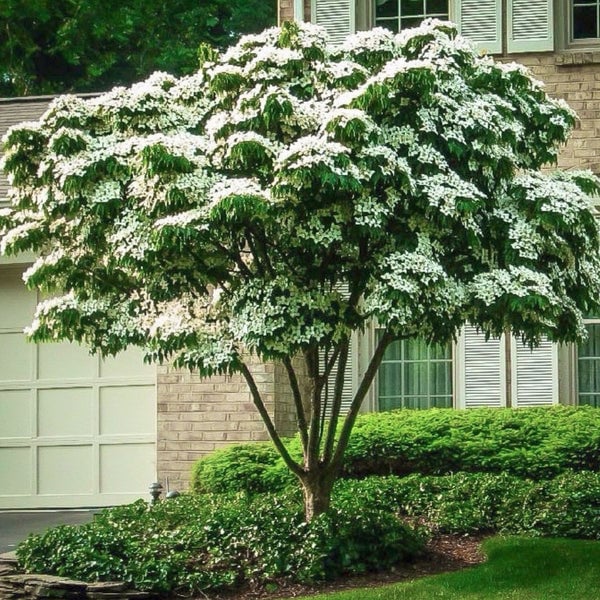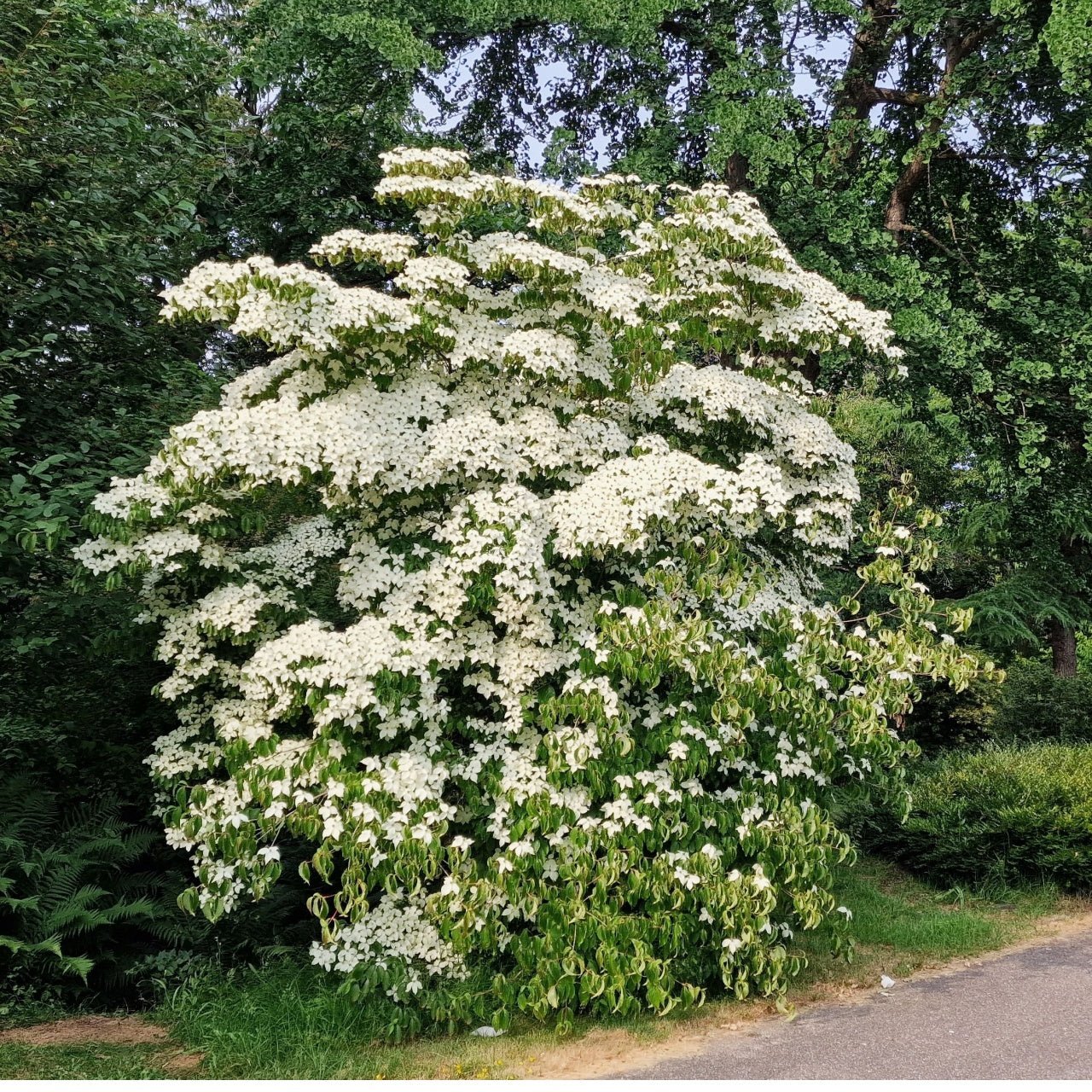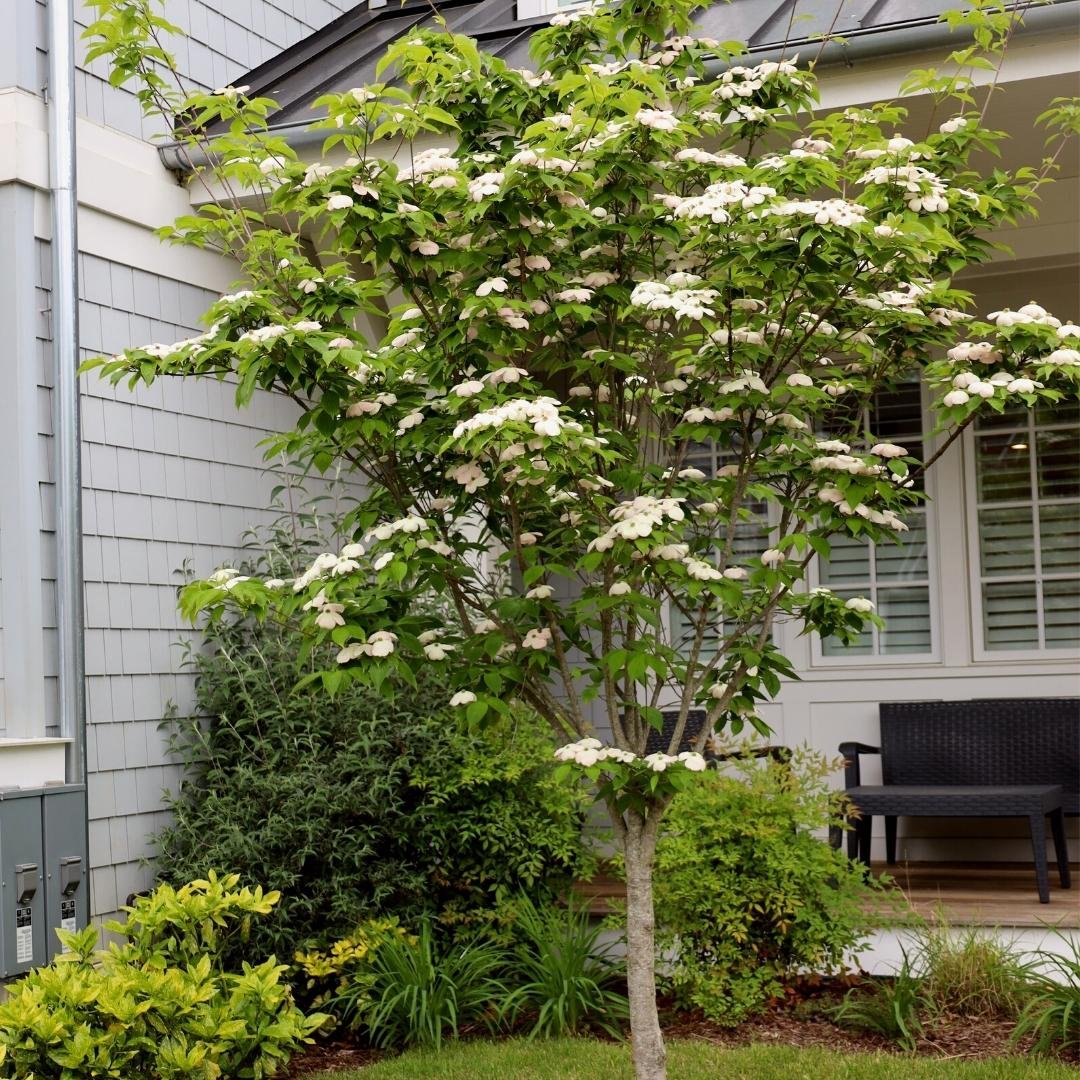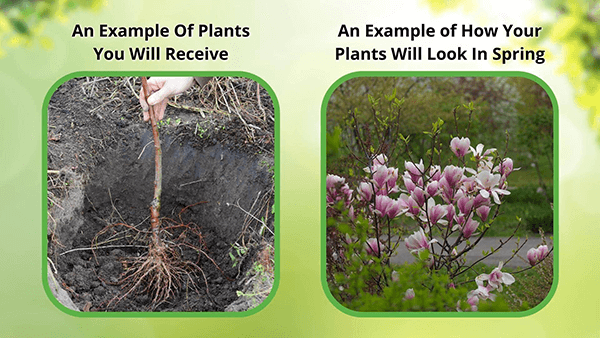




Kousa Dogwood
This plant ships:
NowWe sell bare root plants - click here to see what you'll receive
Kousa Dogwood: Cornus Kousa
The Kousa Dogwood is a medium-sized flowering tree renowned for its showy, star-shaped, white to pinkish flowers, distinctive exfoliating bark, and striking red fruits. These characteristics make it a popular choice in ornamental landscaping. The small specimen tree blooms with green leaves that turn orange in the fall, topped by four-petaled white flowers. The white flowers typically bloom in the late spring, providing visual appeal throughout summer. Small raspberry-like fruits develop once the flowering is complete, attracting beneficial wildlife. As the fruits mature, they change colors from green to pinkish-red. This tree is perfect for landscapers who prefer variety as the seasons change.
Kousa Dogwood Tree Offers Year-round Visual Appeal
Kousa Dogwood Has Exquisite Fall Foliage
| Planting zone | [5, 6, 7, 8] |
|---|---|
| Bloom season | Spring |
| Bloom color | White |
| Height At Maturity | Under 25 Feet |







Kousa Dogwood
This plant ships:
Now| Planting zone | [5, 6, 7, 8] |
|---|---|
| Bloom season | Spring |
| Bloom color | White |
| Height At Maturity | Under 25 Feet |

